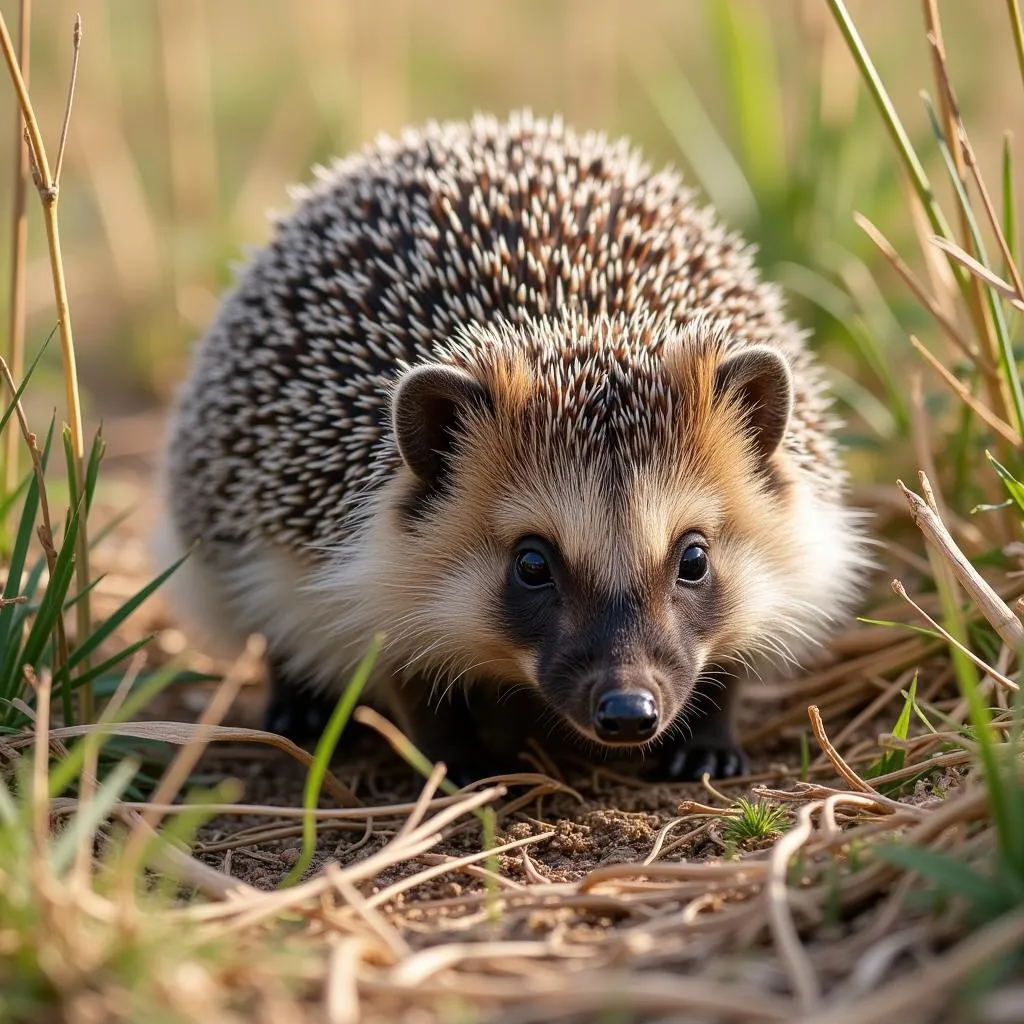African and Indian Elephants: A Majestic Comparison
African And Indian Elephants, two of the largest land mammals on Earth, captivate our imaginations with their sheer size and intelligence. While both share the iconic elephantine form, distinct differences set them apart, shaped by their unique environments and evolutionary paths. This article delves into the fascinating world of these gentle giants, exploring their similarities, differences, and the challenges they face in a rapidly changing world.
African elephants, the larger of the two species, roam the vast savannas and forests of Africa. Their immense size, coupled with their distinctive large ears, makes them easily recognizable. Indian elephants, slightly smaller with smaller ears, inhabit the diverse landscapes of India and Southeast Asia. These differences in size and physical characteristics reflect adaptations to their respective habitats. After generations of evolution, these majestic creatures have adapted to their environments. Check our article about the difference between Indian elephants and African elephants for a detailed breakdown of these magnificent creatures. difference between indian elephants and african elephants
Size and Physical Attributes: Distinguishing Features of African and Indian Elephants
The most obvious difference lies in their size. African elephants, both male and female, typically boast larger ears, shaped like the African continent itself. These massive ears help regulate body temperature in the scorching African heat. Indian elephants, on the other hand, have smaller, fan-shaped ears better suited to the cooler, more forested environments they inhabit.
Beyond ear size, variations in tusks, forehead shape, and overall body size contribute to their distinct appearances. Both male and female African elephants possess tusks, while only some male Indian elephants have them. The forehead of an African elephant is typically flatter than the double-domed forehead of its Indian cousin. These subtle yet significant physical differences reflect their unique evolutionary journeys.
Habitat and Distribution: Where do African and Indian Elephants Live?
African elephants are found across sub-Saharan Africa, inhabiting a wide range of environments, from savannas and grasslands to forests and deserts. Their widespread distribution reflects their adaptability and resilience. Indian elephants, however, are primarily found in India, Sri Lanka, and parts of Southeast Asia, preferring forested areas and grasslands. These habitat preferences further highlight their distinct ecological niches. You can visualize the distribution of African elephants with our African elephant habitat map. african elephant habitat map
Social Structure and Behavior: Understanding Elephant Societies
Both African and Indian elephants are highly social animals, living in complex family groups led by a matriarch. These matriarchal societies provide structure and stability, ensuring the survival and well-being of the herd. However, there are subtle differences in their social dynamics. African elephant herds tend to be larger and more loosely structured than those of Indian elephants. The intricacies of elephant social behavior are a testament to their intelligence and emotional depth.
Conservation Concerns: Protecting These Gentle Giants
Both African and Indian elephants face significant conservation challenges, primarily due to habitat loss and poaching for ivory. The illegal ivory trade poses a severe threat to their survival, driving them towards extinction. Conservation efforts focus on protecting their habitats, combating poaching, and raising awareness about the importance of these magnificent creatures. The plight of elephants underscores the urgent need for global cooperation to safeguard their future.
“The future of elephants rests on our collective responsibility to protect them,” states Dr. Anika Sharma, a renowned wildlife biologist specializing in elephant conservation. “We must act now to ensure these magnificent creatures continue to roam the Earth for generations to come.”
Diet and Feeding Habits: What do African and Indian Elephants Eat?
African and Indian elephants are herbivores, with diets consisting primarily of grasses, leaves, bark, and fruits. Their large size requires them to consume vast quantities of vegetation each day. However, their specific dietary preferences vary depending on their environment and the available food sources. African elephants, for instance, consume more browse (leaves and branches) than Indian elephants, which rely more on grasses. Understanding these dietary differences is crucial for effective conservation management.
“Elephants play a vital role in their ecosystems,” explains Dr. Joseph Nkosi, an expert in African ecology. “Their feeding habits shape the landscape and influence the distribution of other species.”
Conclusion: Celebrating the Majesty of African and Indian Elephants
African and Indian elephants, while distinct in their physical attributes and geographical distribution, share a common thread: their majesty and importance in the natural world. Understanding their unique characteristics and the challenges they face is crucial for their conservation. Let us continue to marvel at these gentle giants and work together to ensure their survival for generations to come. Perhaps you’re also curious about the blend of African and Asian cultures? Explore more on this fascinating topic with our article on African and Asian mixed. african and asian mixed Learn more about African Countries beginning with S. african countries beginning with s
FAQ
- What is the main difference between African and Indian elephants?
- The most obvious difference is size and ear shape. African elephants are larger with bigger, fan-shaped ears.
- Do all elephants have tusks?
- No, only some male Indian elephants have tusks, while both male and female African elephants typically have them.
- What do elephants eat?
- Elephants are herbivores, eating grasses, leaves, bark, and fruits.
- What are the biggest threats to elephants?
- Habitat loss and poaching for ivory are the biggest threats.
- How can I help protect elephants?
- Support conservation organizations, spread awareness, and avoid purchasing ivory products.
- What is the social structure of elephants like?
- Elephants live in matriarchal herds led by the oldest female.
- Where can I find more information about African landscapes?
- Check out our African landscape pictures. african landscape pictures
Scenarios and related questions
- Scenario: You are planning a safari to see elephants in the wild.
- Question: Which type of elephant, African or Indian, are you more likely to see on an African safari?
- Scenario: You are watching a nature documentary about elephants.
- Question: How can you tell if the elephants you are seeing are African or Indian?
- Scenario: You are researching the impact of climate change on elephant populations.
- Question: How might climate change affect the availability of food and water for both African and Indian elephants?
Further exploration:
You might be interested in reading more about elephant conservation efforts or learning about the specific challenges faced by each species. You can also explore resources that discuss the ethical considerations of elephant tourism and the importance of responsible wildlife viewing.
Call to Action:
For any support or inquiries, please contact us at Phone: +255768904061, Email: [email protected], or visit our office at Mbarali DC Mawindi, Kangaga, Tanzania. Our customer service team is available 24/7.


